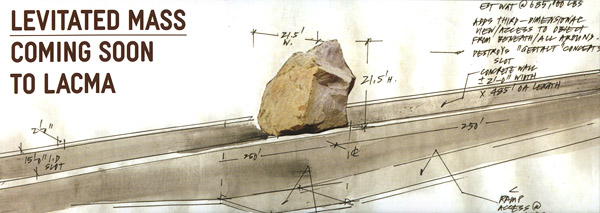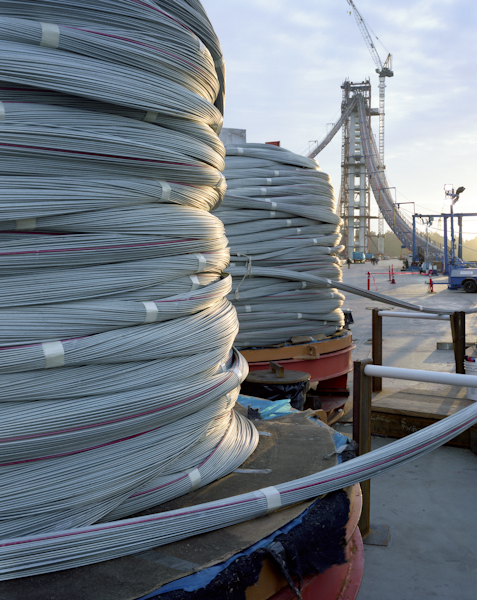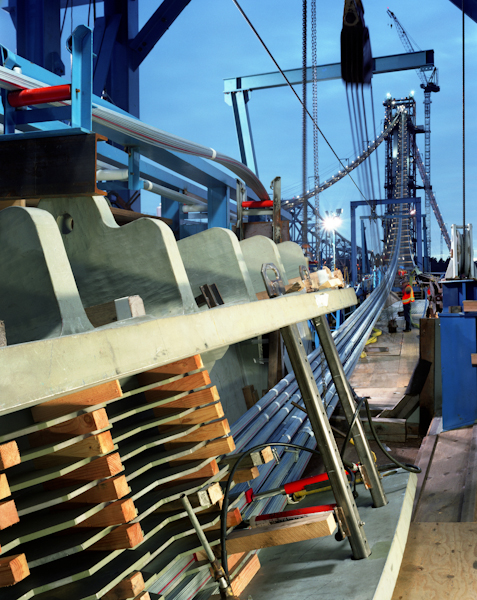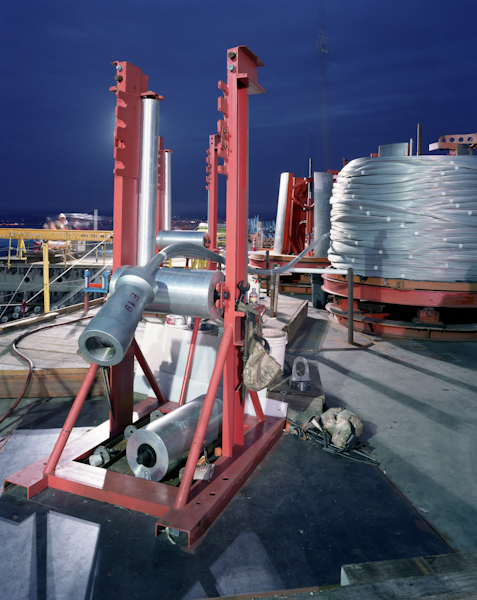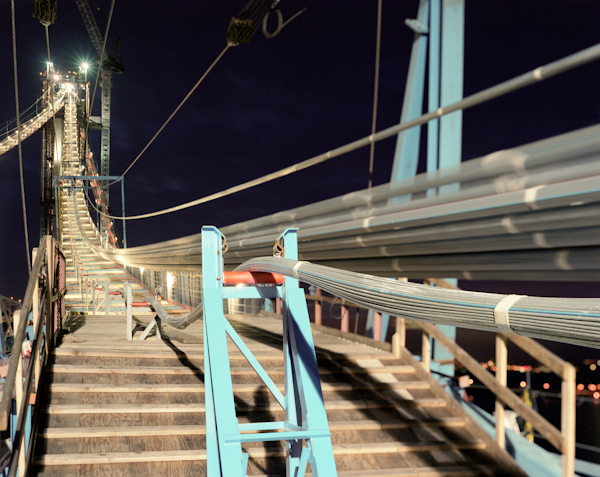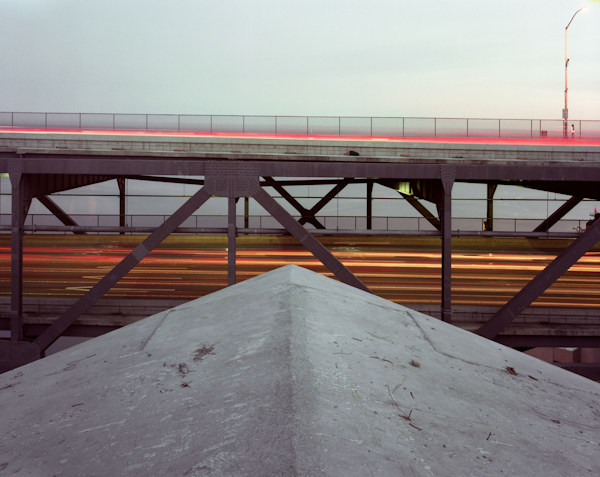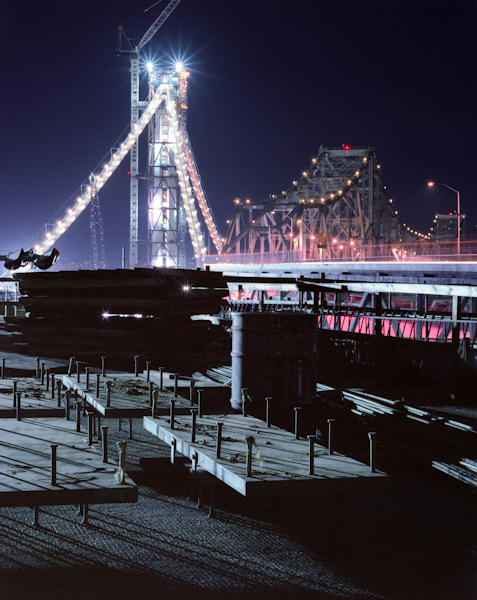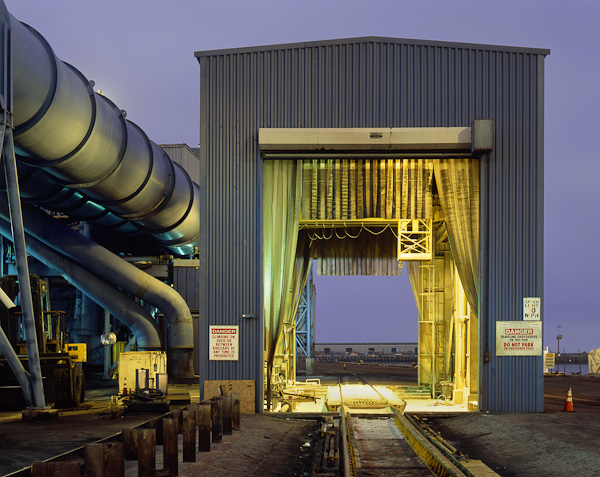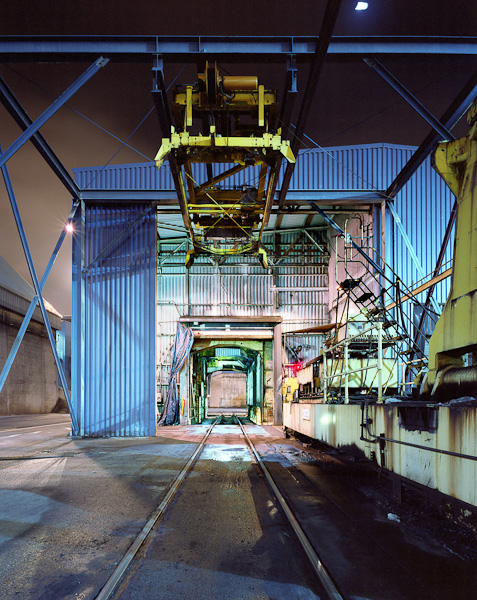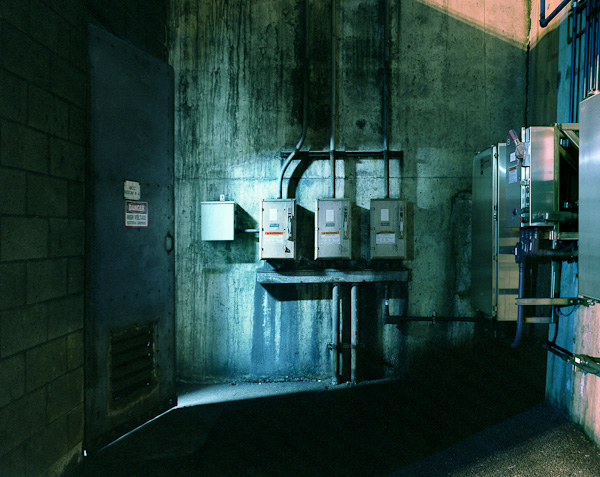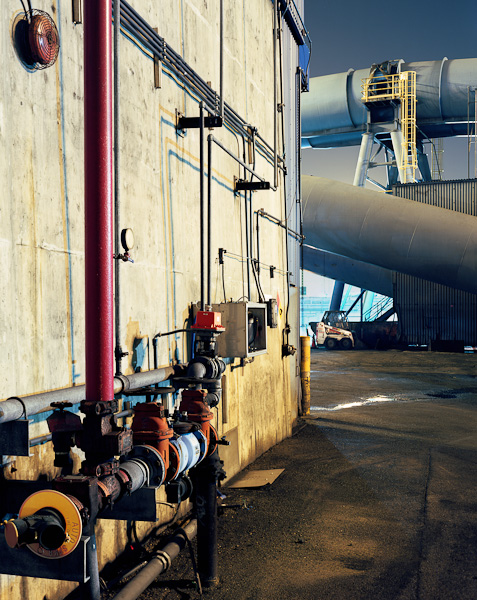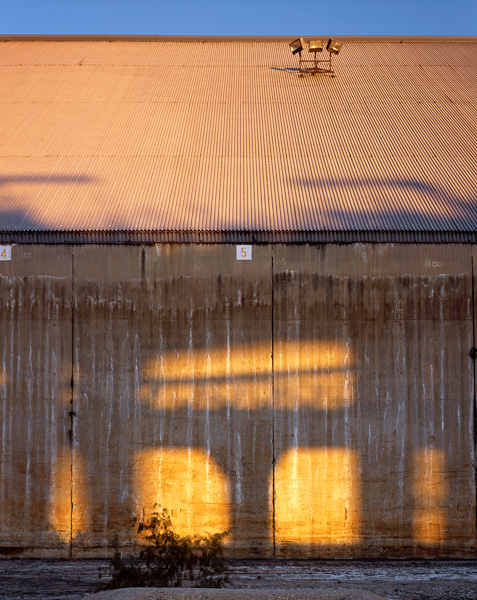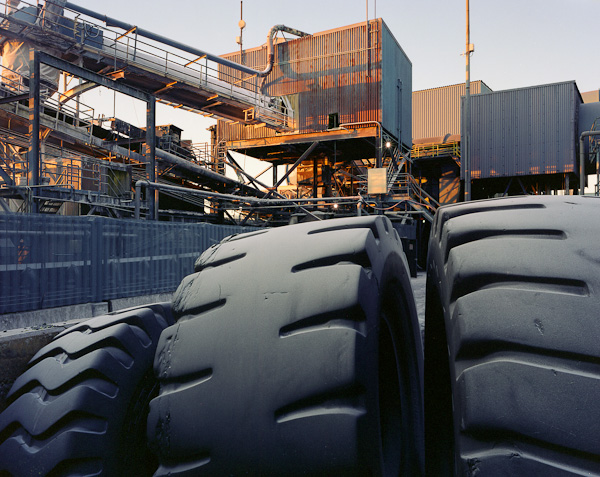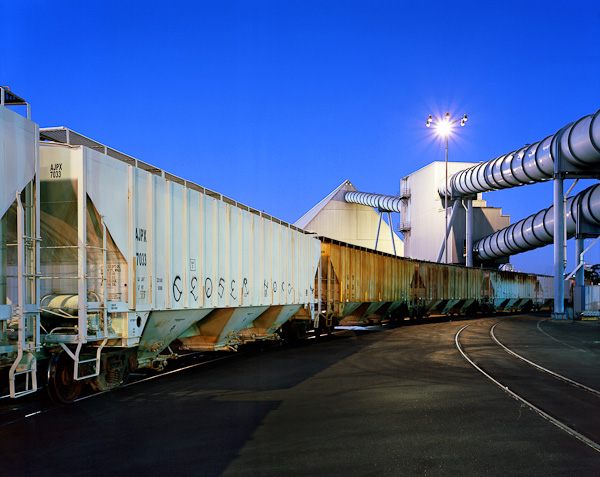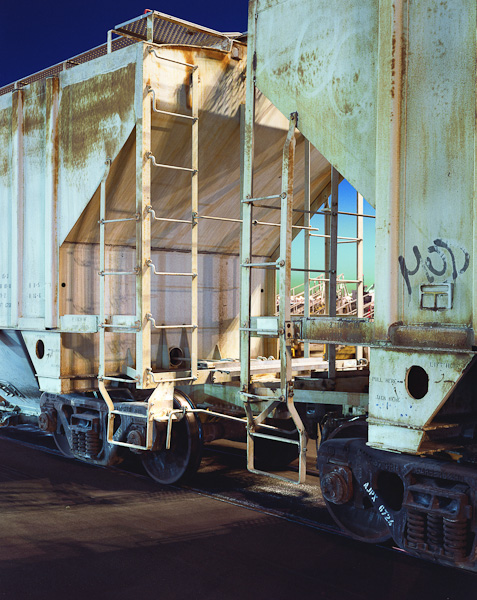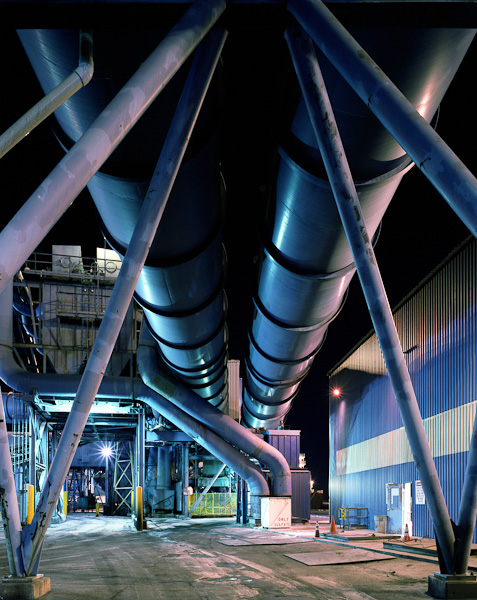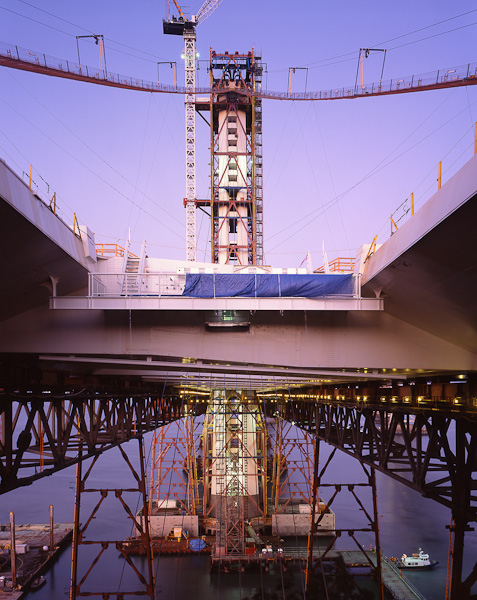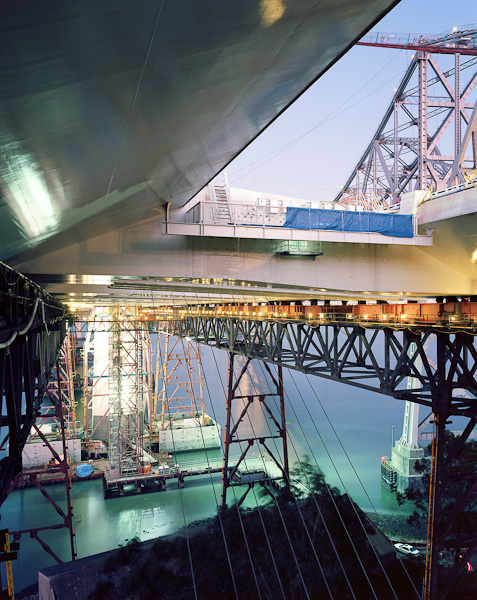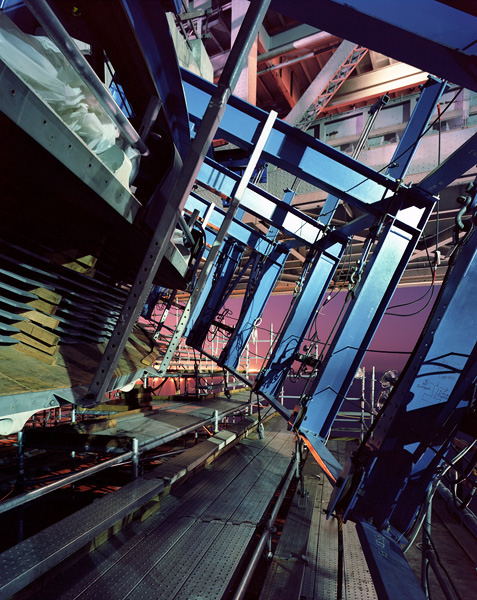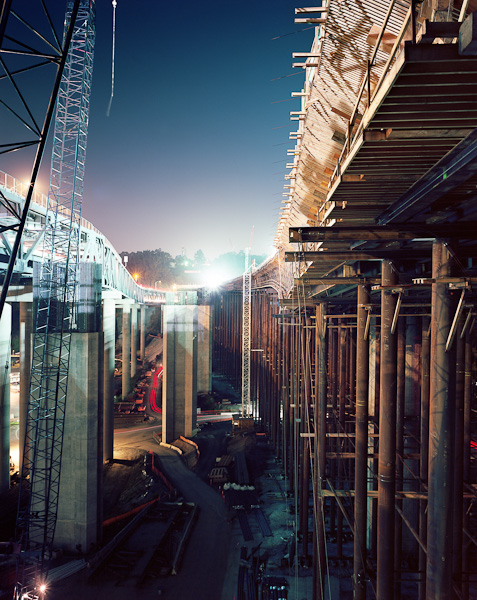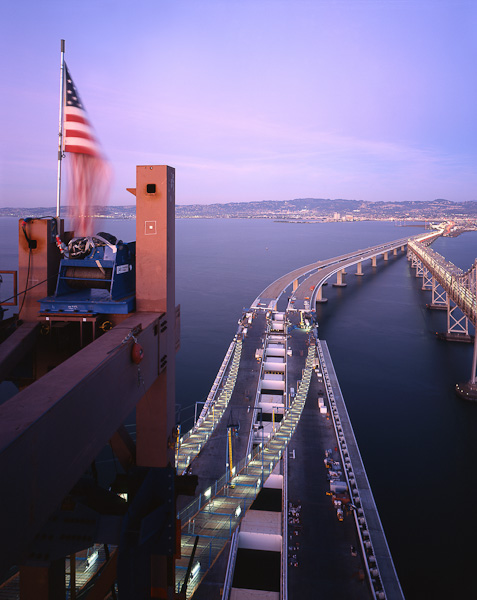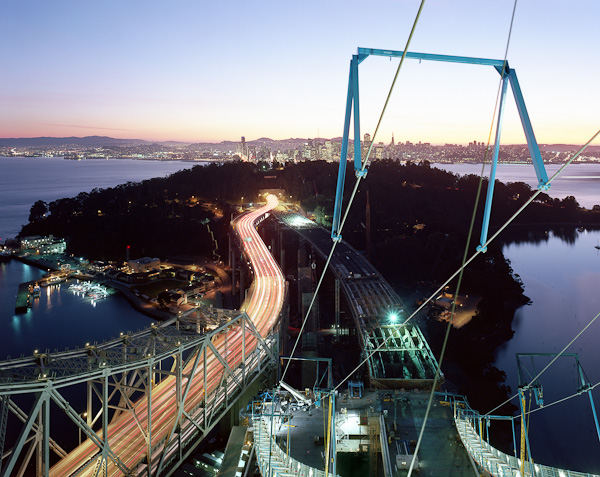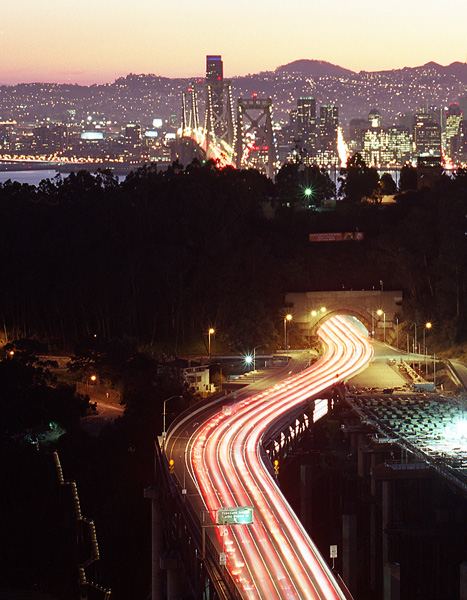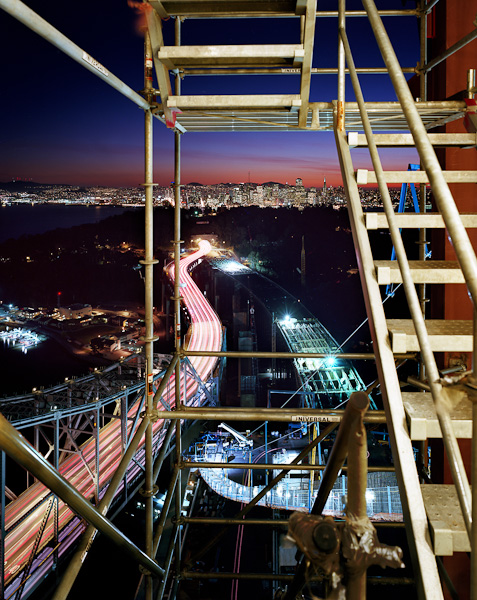First, a happy new year to you all.
Over the past year, I have been working on a major project photographing the state of closed auto dealerships in Los Angeles. I started this series a year ago, after reading that GM and Chrysler shut down almost 3,000 dealers nationwide in the previous two years, not to mention over 1,000 more that went out of business by attrition due to the poor economy and other circumstances. The sheer number of closed dealerships is a dramatic indication of the damage of the current recession.
Economic hardship has taken its toll even in car-culture LA. It is ironic that so many dealerships would be closed, as there are still so many cars being purchased daily. For a sense of scale, there are about 232 million cars nationwide and over 26 million cars in LA (that’s 1.8 for every man, woman and child). Over 10% of all the cars in the country are in LA. We Angelenos drive over 300 million miles daily. Sobering numbers, to be sure, and it reflects that the car is an important part of life and work in LA.
Cars wear out and need to be replaced. But American consumers are keeping their cars longer then ever; the average age of a car in the US in now 11 years old (incidentally the same age as my car). Hence, a contributing factor in closing some of the new car dealerships.
As I delved into this series, I did some research to discover how boarding up all these dealerships affects the economy. By mid 2011, an estimated 200,000 people were laid off nationwide due to the systematic closure of the dealerships, putting a major workforce of mechanics, sales and administrative staff out on the street in a stressed economy. This is not just affecting Detroit and other manufacturing locations, but affects us all in our local areas.
Because of the historical and cultural importance of this project, I wanted to shoot it in 8 x 10 with the last of the color film that I had stockpiled (most 8 x 10 color films have been discontinued). I shot about 175 views at 15 closed dealerships in LA county over the past year. During this period, I saw many other boarded up locations in my travels, especially in the Inland Empire east of LA and other rural locations around the country, but decided to limit the project to LA. I wanted to focus on the impact close to home and as it relates to LA’s relationship to cars and car culture.
In keeping with the tone of this blog, here are a small selection of twilight and night images.
 Not just dealers from the “Big Three” of Ford, GM and Chrysler have been affected. Above is a former Honda dealership. This is a 15-minute exposure started at twilight, and it was totally dark when finished. The light on the left is from streetlights. That is a cloud in the upper right that remarkably stayed in the same shape and location for the long exposure.
Not just dealers from the “Big Three” of Ford, GM and Chrysler have been affected. Above is a former Honda dealership. This is a 15-minute exposure started at twilight, and it was totally dark when finished. The light on the left is from streetlights. That is a cloud in the upper right that remarkably stayed in the same shape and location for the long exposure.
.
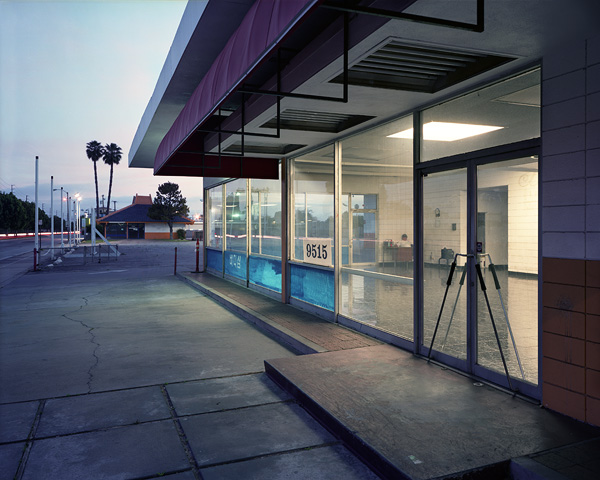 The auto industry has had many types of transitions in the past three years, including the death of several marque car brands. Above is a vacant Mercury dealership in Downey, a city that has experienced a number of closures. This facility has a couple of “security” lights on and they are actively trying to sell the property. I was hassled by security at this location (as well as a couple of others), but when they saw the “seriousness” of camera, and that I was not there to loot or damage anything, the guard left me alone to shoot.
The auto industry has had many types of transitions in the past three years, including the death of several marque car brands. Above is a vacant Mercury dealership in Downey, a city that has experienced a number of closures. This facility has a couple of “security” lights on and they are actively trying to sell the property. I was hassled by security at this location (as well as a couple of others), but when they saw the “seriousness” of camera, and that I was not there to loot or damage anything, the guard left me alone to shoot.
.
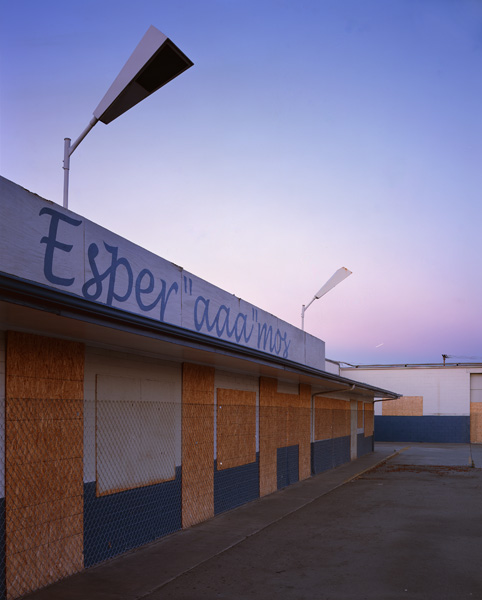 At this closed Chevrolet dealership, the windows and doors were boarded up and locked down tight in this twilight shot. Oddly, the Spanish signage ‘esperamos’ translates into “hope”, but with the rest of the words out of view, the meaning is “hoping to see you”. I think not at this point…
At this closed Chevrolet dealership, the windows and doors were boarded up and locked down tight in this twilight shot. Oddly, the Spanish signage ‘esperamos’ translates into “hope”, but with the rest of the words out of view, the meaning is “hoping to see you”. I think not at this point…
.
 As you can read on the building, this is a former Chrysler/Jeep dealership. Security was tight at this location on a weekday evening and I was limited to shoot from the sidewalk. Nevertheless, there were a couple of good shots to be had including this illuminated “Customer Parking” sign. It is in sharp contrast to the chained fences at each entrance and lonely parking lot. Balancing the artificial lights of the sign and twilight was part of the waiting game. I did get back to this location on a Sunday night and had better luck with the weekend security guard.
As you can read on the building, this is a former Chrysler/Jeep dealership. Security was tight at this location on a weekday evening and I was limited to shoot from the sidewalk. Nevertheless, there were a couple of good shots to be had including this illuminated “Customer Parking” sign. It is in sharp contrast to the chained fences at each entrance and lonely parking lot. Balancing the artificial lights of the sign and twilight was part of the waiting game. I did get back to this location on a Sunday night and had better luck with the weekend security guard.
.
 There was a bleakness to this forlorn auto pedestal in the empty parking lot. This dealer began business in the 1950s, and I can imagine some big finned beauty sitting on this perch years ago.
There was a bleakness to this forlorn auto pedestal in the empty parking lot. This dealer began business in the 1950s, and I can imagine some big finned beauty sitting on this perch years ago.
.
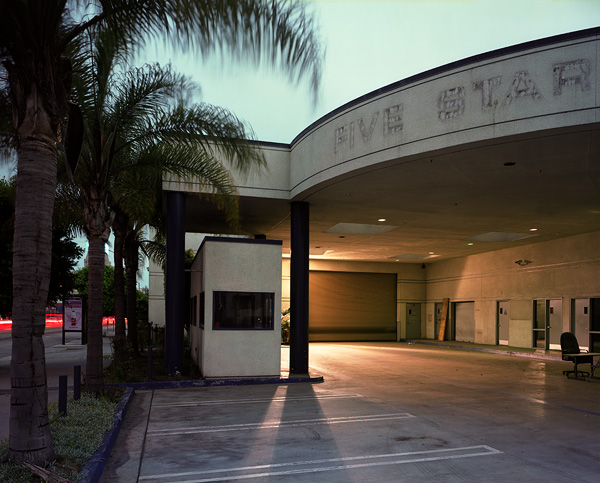 This former Chrysler dealership near Hollywood is not so “Five Star” any longer. Note the office chair on the right which is for the security guard. When he left for his meal break, I had run of the place. Careful placement of the camera to hide the very bright and blaring security light behind the post was important in getting this melancholy exposure. l love the trails of the auto traffic on the street at the left.
This former Chrysler dealership near Hollywood is not so “Five Star” any longer. Note the office chair on the right which is for the security guard. When he left for his meal break, I had run of the place. Careful placement of the camera to hide the very bright and blaring security light behind the post was important in getting this melancholy exposure. l love the trails of the auto traffic on the street at the left.
.
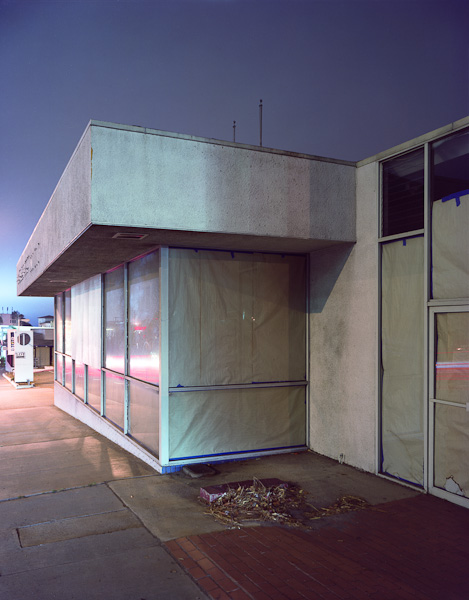 The carefully papered windows of this former BMW dealership contribute to this forlorn image. Determining the exposure was difficult, as it is lit from the intermittent passing cars on Sepulveda Blvd. Complex camera movements were needed to retain focus throughout, on this 20-minute exposure. It appeared considerably darker to the eye than in this shot.
The carefully papered windows of this former BMW dealership contribute to this forlorn image. Determining the exposure was difficult, as it is lit from the intermittent passing cars on Sepulveda Blvd. Complex camera movements were needed to retain focus throughout, on this 20-minute exposure. It appeared considerably darker to the eye than in this shot.
.
 It was the bright light off to the right, illuminating the weeds of the parking lot that piqued my interest to make this view at a former Mercedes dealership. The bright mercury-vapor security lamp casting the beam of light mixing with a sodium-vapor lamp over my shoulder adds the subtle play on color.
It was the bright light off to the right, illuminating the weeds of the parking lot that piqued my interest to make this view at a former Mercedes dealership. The bright mercury-vapor security lamp casting the beam of light mixing with a sodium-vapor lamp over my shoulder adds the subtle play on color.
.
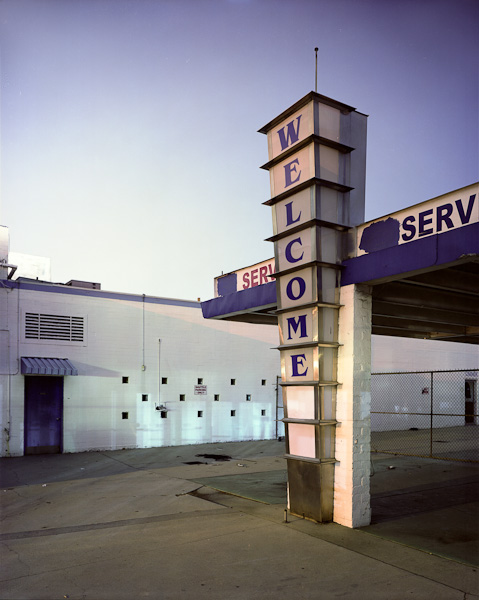 The Art-Deco influenced design of this former Ford location, built in the 1940s, was intriguing. Because of these unusual design cues, I returned to shoot at this locale more than any other. It was a sprawling location with many buildings and interesting architectural details, like this ‘Welcome’ sign. Note the staggered glass block wall in the background. This is a 30-minute exposure night shot using only available light. This facility has been sold and is being razed soon for a new hotel on the location.
The Art-Deco influenced design of this former Ford location, built in the 1940s, was intriguing. Because of these unusual design cues, I returned to shoot at this locale more than any other. It was a sprawling location with many buildings and interesting architectural details, like this ‘Welcome’ sign. Note the staggered glass block wall in the background. This is a 30-minute exposure night shot using only available light. This facility has been sold and is being razed soon for a new hotel on the location.
.
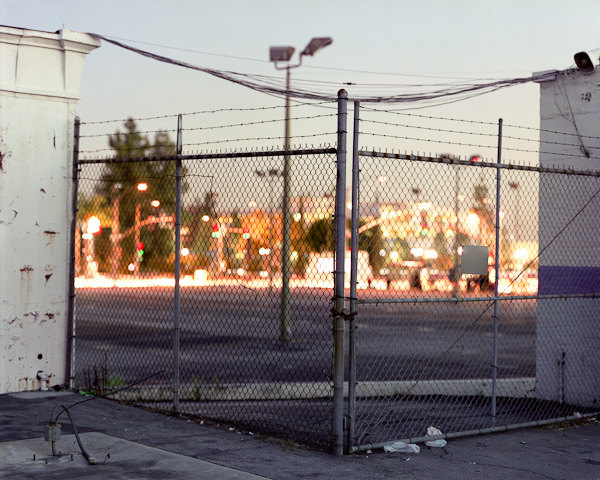 Most of the locations had a series of fences to keep vandals and homeless people out. This image, actually shot from inside the dealership, conveys the feeling of the locked down facility with the empty lot beyond. I shot at twilight with minimal focus on the edge of the gate.
Most of the locations had a series of fences to keep vandals and homeless people out. This image, actually shot from inside the dealership, conveys the feeling of the locked down facility with the empty lot beyond. I shot at twilight with minimal focus on the edge of the gate.
.
 In this 30-minute exposure, a security lamp is raking light across the heavily textured wall. The long shadows are from the poles on the left. The clouds were moving in just the right direction that evening, echoing the roof-line.
In this 30-minute exposure, a security lamp is raking light across the heavily textured wall. The long shadows are from the poles on the left. The clouds were moving in just the right direction that evening, echoing the roof-line.
.
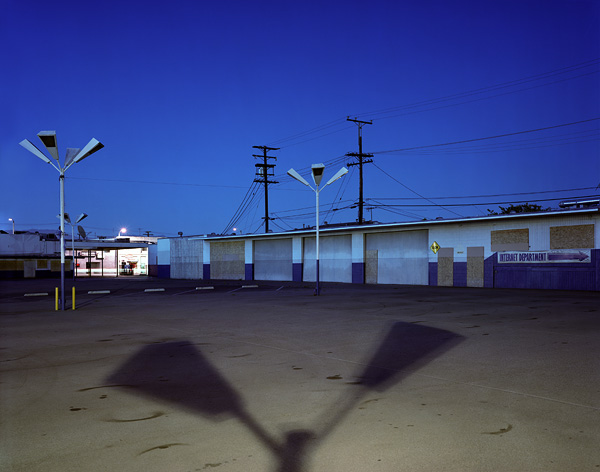 A bright security lamp from the bank next door ATM machine is casting the shadow on one of the old light fixtures from this empty dealership parking lot.
A bright security lamp from the bank next door ATM machine is casting the shadow on one of the old light fixtures from this empty dealership parking lot.
.
One of the 15 locations I shot was a thriving dealer in Norwalk in the early 2000s when I photographed it for the architect just after it was built. Now, less than 10 years later, it is closed and vacant. By the end of 2011, two of the 15 have been demolished, two have re-opened as used car dealerships, and the others are still vacant, awaiting whatever is next.
Many have asked why I focused on this project. I wanted to portray the story of the impact of the economy on the many people hit so hard by the failures of the auto industry: the dealerships, many of which were family businesses; the 200,000 laid off workers; and the millions of dollars lost. The buildings bear witness and are the scars that remain. At night, they convey the quiet ache of loss. Shooting the way I do is more than documentation, as I try to capture the feeling of the locations.
Shooting in the 8 x 10 format gives me the discipline be very critical and selective about what I shot and how I shot it. Large format has a wonderful tonality and captures amazing detail; the images can be enlarged to virtually any size and retain their beauty and depth. But large format is also very demanding. Waiting for 15 – 20 minutes for the light to be perfect is common, as are the long 20 – 30 minute exposures at night. I usually get only 4 – 7 views per visit. It was a challenge having to overcome many technical issues and to be patient.
While I am working, I think a lot about the dealerships when they were going concerns, of the people who worked at these locations, of theirs and the dealerships role in the communities in which they were a big part, and of the people who came in to get just the right new car for their needs. All of us are hunkering down now, navigating the changes thrust on us by these challenging times, and trying to find the best way through to better prospects.
.
Here is an image of me shot by my fellow 8 x 10-shooting friend and colleague, Tom Johnson, made with my point and shoot digital camera. He shot with me on a couple of the evenings. It gives an idea of what the camera set up looks like.
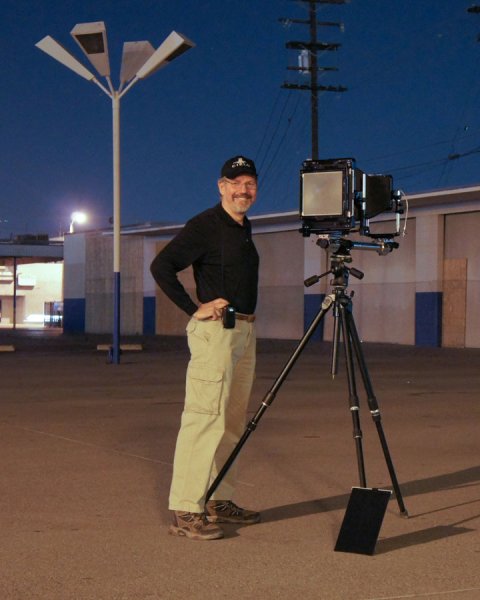 To view more on this series, I did two other postings from this series early last year, one on a Googie style dealer and another dealer.
To view more on this series, I did two other postings from this series early last year, one on a Googie style dealer and another dealer.
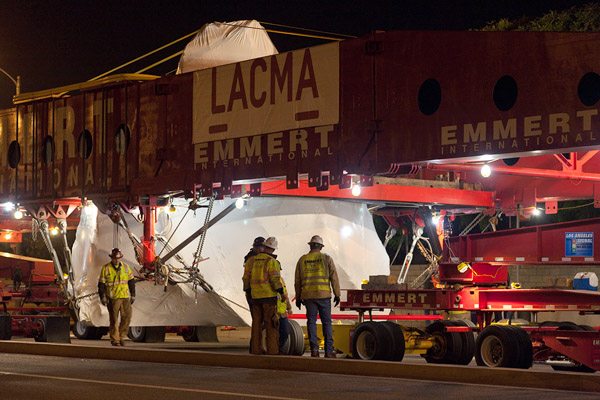
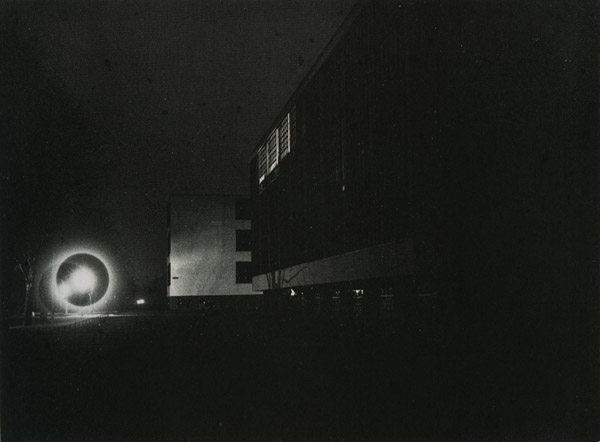 This phenomenon is caused by the double refraction of light on the two surfaces of the glass.
This phenomenon is caused by the double refraction of light on the two surfaces of the glass. As you can see here, we was exploring the light spilling from the interior of the building and the shadows from a street lamp from the left. Feninger was a friend, neighbor and contemporary of László Moholy-Nagy and this is the light coming from his studio next door.
As you can see here, we was exploring the light spilling from the interior of the building and the shadows from a street lamp from the left. Feninger was a friend, neighbor and contemporary of László Moholy-Nagy and this is the light coming from his studio next door. He also did some great train shots such as this rail yard in Dessau, Germany, 1928. The contrast of the black locomotives and deep shadows with the snow makes for a dramatically graphic image. His notes say that it was -20C (-4F) when he made this shot, and you can feel it in this image.
He also did some great train shots such as this rail yard in Dessau, Germany, 1928. The contrast of the black locomotives and deep shadows with the snow makes for a dramatically graphic image. His notes say that it was -20C (-4F) when he made this shot, and you can feel it in this image.
